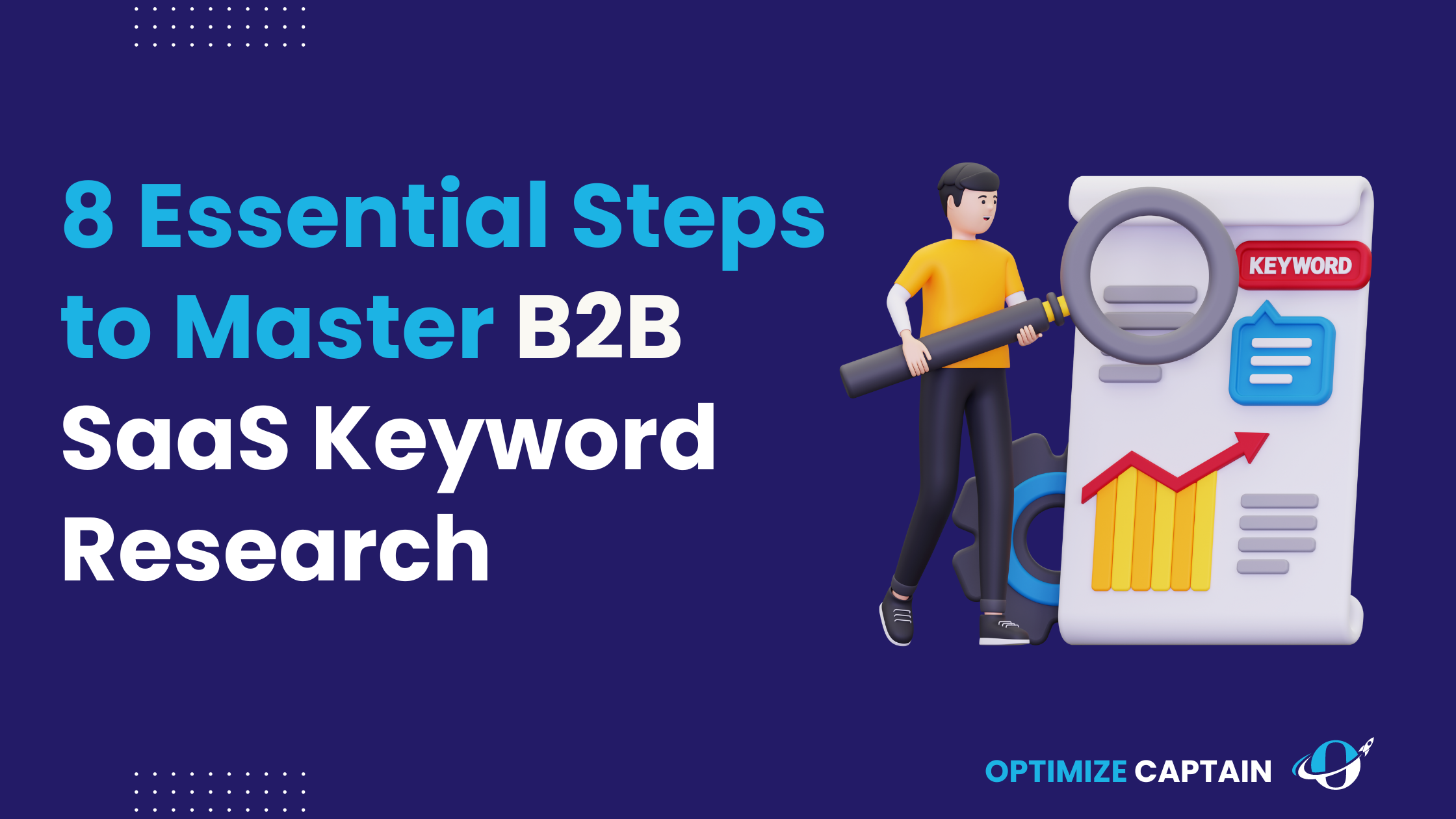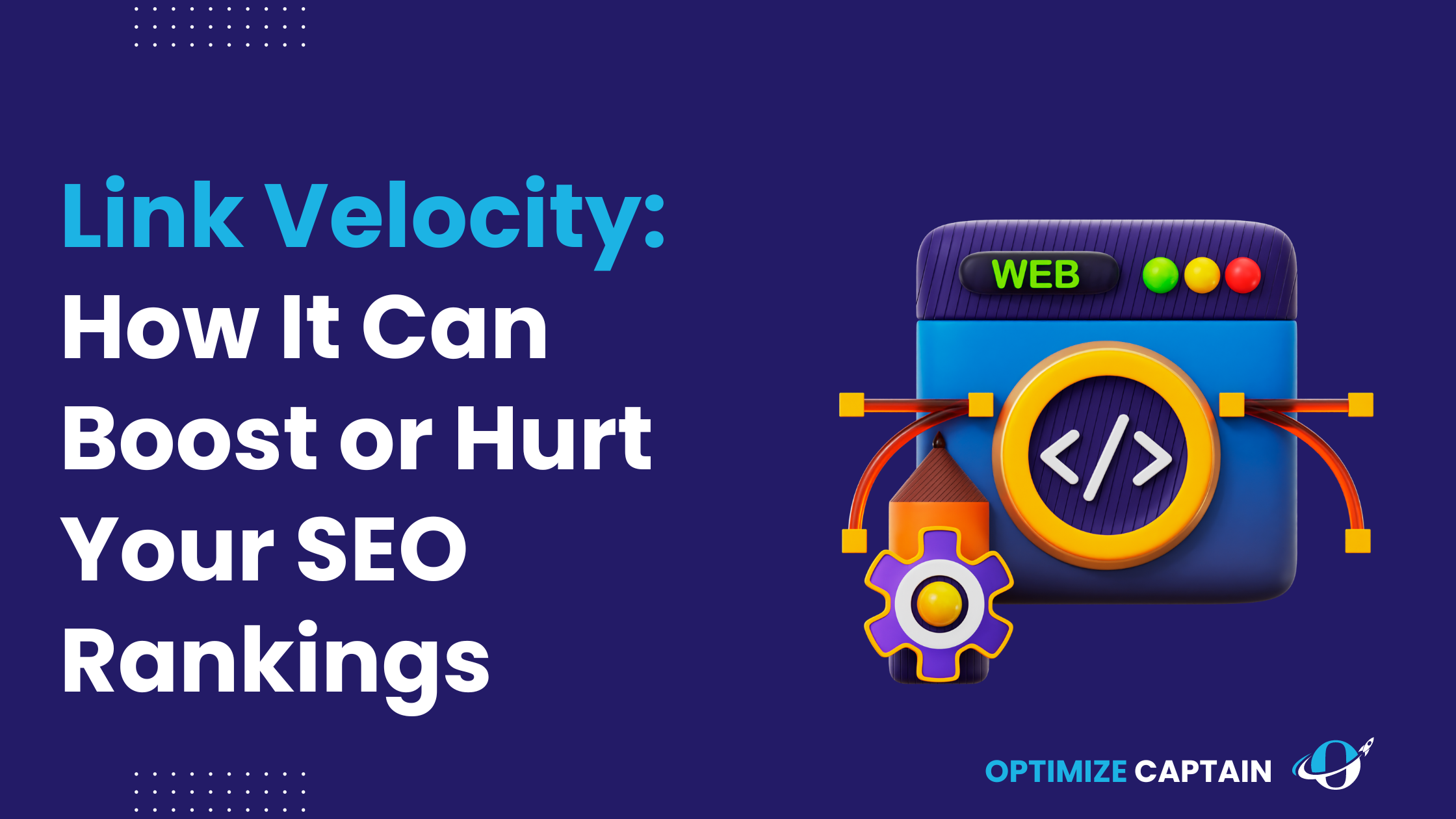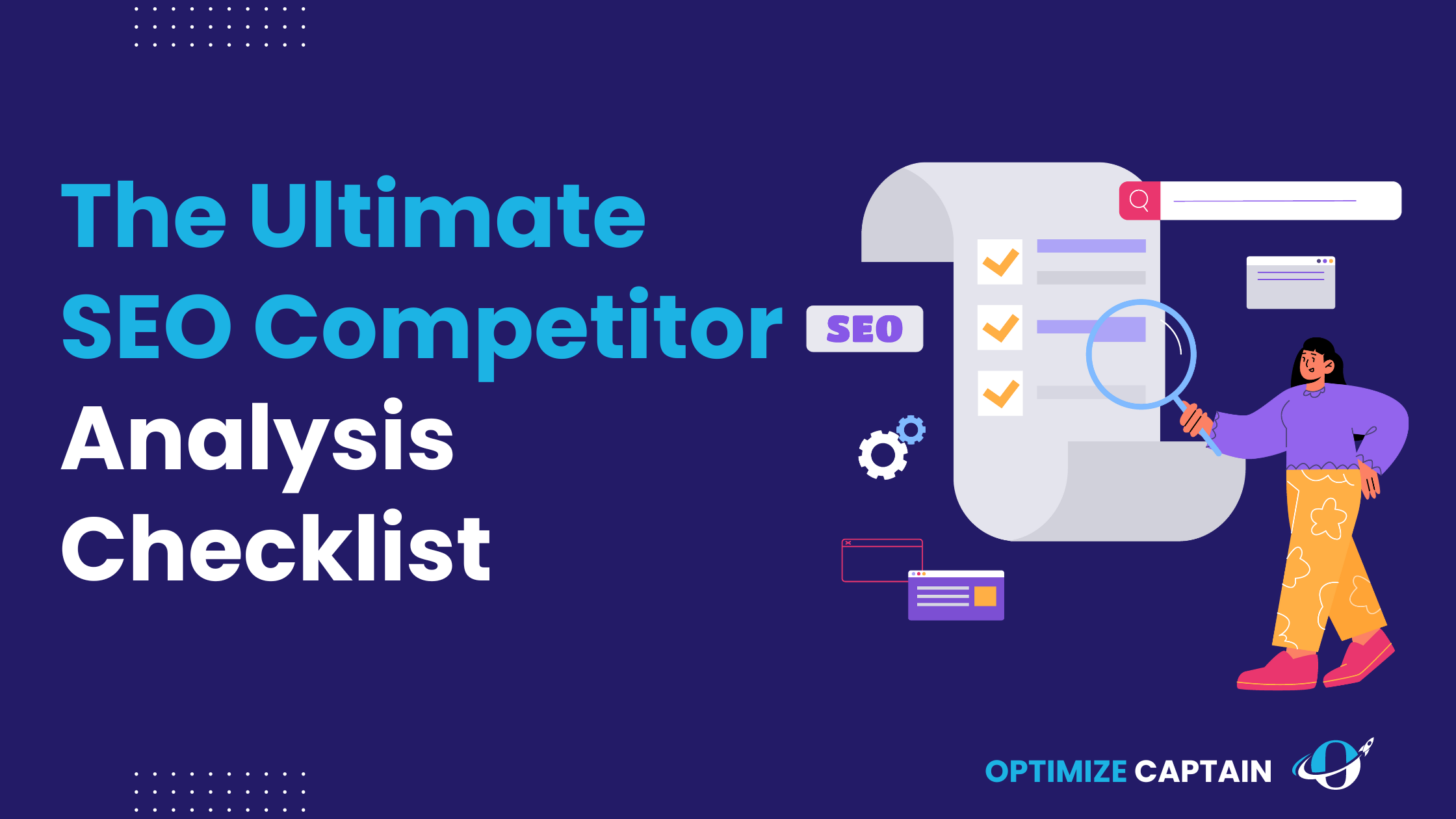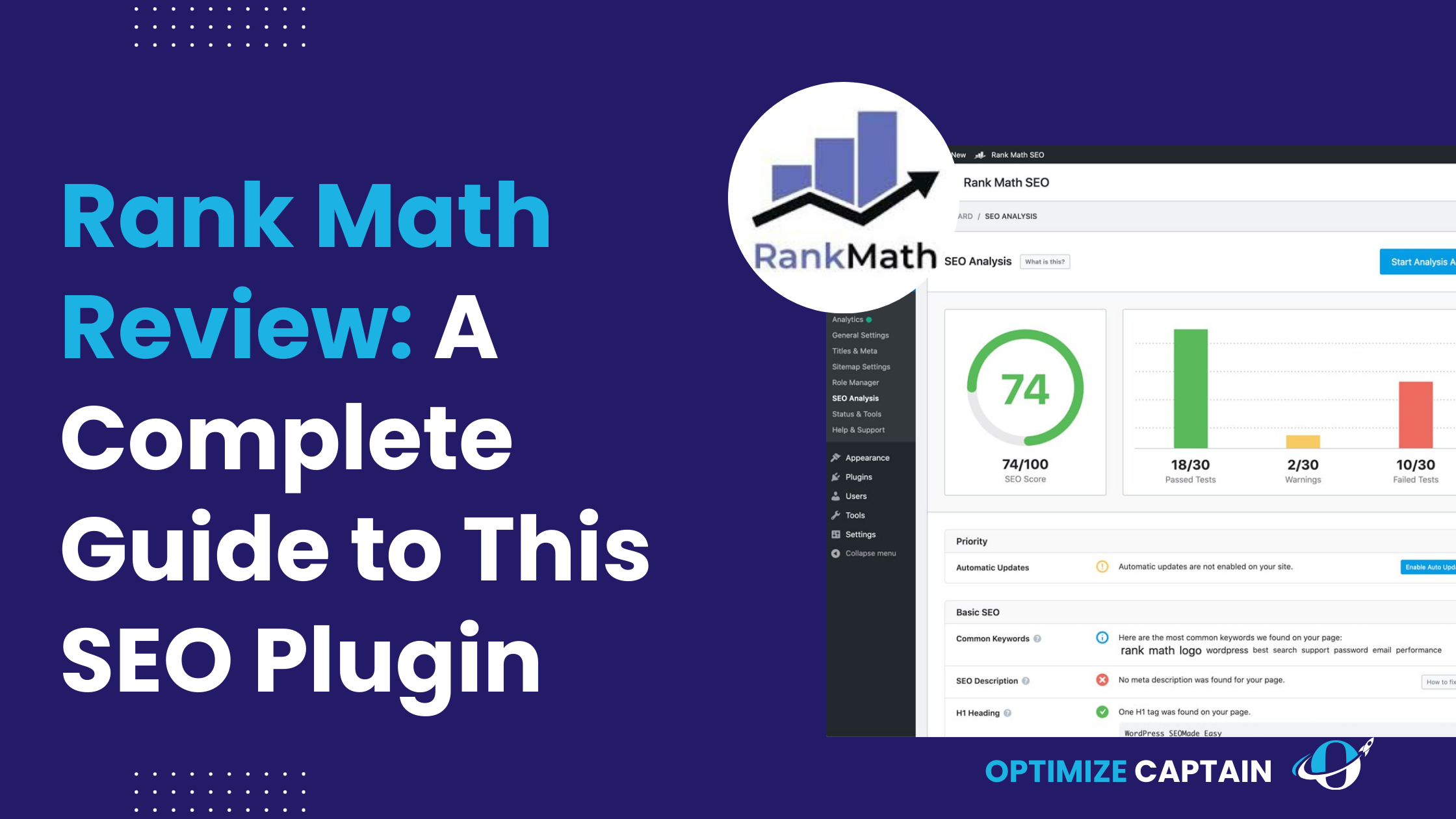Did you know over 1 million SaaS-related keywords are being searched every month?
Yet, many B2B SaaS companies struggle to use these keywords effectively.
Most people think keyword research is just about finding popular search terms.
In reality, it’s about understanding your potential customers’ language and using this insight to create content that speaks to them.
Imagine you’re running a SaaS company like Canva. You might think targeting broad keywords like “graphic design software” is the way to go.
But the real value lies in long-tail keywords like “easy graphic design tool for beginners” or “best infographic maker for marketers.”
These keywords may have lower search volumes, but they attract highly qualified traffic that is more likely to convert.
Keyword research is the foundation of your SEO strategy. Without it, you’re navigating without a map, hoping to find the right path.
With a well-structured keyword research strategy, you can create content that attracts visitors and converts them into leads and customers.
In this comprehensive guide, we’ll take you through the entire keyword research process for B2B SaaS, from setting clear objectives to using advanced tools and techniques.
We’ll share examples, statistics, and actionable insights to help you build a keyword strategy that drives results.
Whether you’re new to keyword research or looking to improve your existing approach, this guide will give you the knowledge and tools you need to succeed in 2024 and beyond.
Let’s dive in and uncover the keywords that will fuel your B2B SaaS growth.
Understanding the Importance of Keyword Research in B2B SaaS
Keyword research is essential for any successful SEO strategy, especially in the B2B SaaS. It’s not just about discovering popular search terms; it’s about understanding what your potential customers are searching for and ensuring that your content meets their needs.
Definition and Significance
So, what exactly is keyword research? At its core, keyword research involves identifying the terms and phrases your target audience uses when searching for solutions related to your product or service.
This process helps you understand their language and intent, allowing you to create content that aligns with their needs.
Take Salesforce, for example. They’ve mastered the art of keyword research. By understanding what their audience is searching for, they’ve dominated search results for terms like “CRM software” and “sales automation tools.”
Current Trends in B2B SaaS SEO
The landscape of keyword research is constantly evolving. In 2024, one significant trend is the shift towards intent-based keywords.
Instead of focusing solely on high-volume keywords, innovative B2B SaaS companies target keywords reflecting user intent. This means understanding whether the user is looking for information, trying to navigate to a specific site, or ready to make a purchase.
For instance, keywords like “how to improve customer retention” (informational intent) and “best CRM for small business” (transactional intent) are crucial for capturing users at different stages of their buying journey.
Common Mistakes in B2B SaaS Keyword Research
Even with a solid understanding of keyword research, it’s easy to make mistakes.
Here are a few common pitfalls:
- Targeting overly broad keywords: Many companies make the mistake of aiming for broad keywords like “software solutions” or “business tools.” While these keywords have high search volumes, they are highly competitive and often attract a wide range of searchers, many of whom may be interested in something other than your specific product.
For example, the keyword “software solutions” has a search volume of over 10,000 searches per month but comes with a high keyword difficulty score of 80. Competing for such broad terms means competing against well-established brands like Microsoft and Oracle, which already dominate the top spots. To rank for these keywords, you would need significant time and resources to create extensive content and build numerous high-quality backlinks.
Instead, focusing on more specific, long-tail keywords can attract a more targeted audience likely to convert. For instance, “easy project management software for startups” may have a lower search volume, but it will bring in visitors specifically looking for a solution like yours.
- Ignoring search intent: More than finding keywords with high search volumes is needed; understanding the searcher’s intent is crucial. For example, someone searching for “free CRM” is likely in the research phase and may not be ready to purchase, while a search for “best CRM for small business” indicates a readiness to buy. Ignoring this difference can lead to low conversion rates, as your content may not match the user’s needs at their specific stage of the buying journey.
- Neglecting keyword context: Keywords must be relevant to the content they support. For instance, targeting “enterprise SaaS solutions” without providing detailed, high-level content can mislead and frustrate your audience. Ensure that the keywords you choose align with the depth and focus of your content.
A company that corrected these mistakes is HubSpot. Initially, they targeted broad terms like “marketing software,” but they saw better results when focusing on more specific, intent-based keywords like “inbound marketing tools.”
8 Step-by-Step Keyword Research Process for B2B SaaS Businesses
#1 Setting Clear Objectives for Your Keyword Research
A successful keyword research strategy begins with setting clear objectives. With defined goals, you can avoid targeting keywords that align with your business priorities or the needs of your target audience. Here’s how to set your keyword research on the right path.
Defining Business Goals
Start by aligning your keyword strategy with your overall business objectives. What are you trying to achieve? Is it brand awareness, lead generation, or customer retention? Each goal will influence the type of keywords you should focus on.
For instance, you might target broad, informational keywords to increase brand awareness. However, if your objective is lead generation, you should focus on more specific, transactional keywords that indicate a readiness to purchase.
Example: HubSpot’s approach to aligning keyword research with its inbound marketing strategy is a great example. They focus on keywords that align with their goal of attracting potential customers through valuable content. By targeting keywords like “inbound marketing strategies” and “CRM software,” they ensure that their content meets users’ needs at various stages of the buyer’s journey.
Understanding Your Target Audience
Understanding your target audience is crucial for effective keyword research. You need to know who they are, what they need, and how they search for information online. This involves creating detailed buyer personas that represent your ideal customers.
Creating Buyer Personas:
- Demographics: Age, gender, job title, industry, company size.
- Psychographics: Interests, challenges, goals, pain points.
- Behavioural Data: Search habits, preferred content formats, buying behaviour.
By developing detailed personas, you can better predict your audience’s keywords and the intent behind their searches. This helps in creating content that resonates with them and drives conversions.
According to the Content Marketing Institute, 73% of B2B marketers use personas to guide keyword research. This practice helps tailor content to meet different audience segments’ needs and preferences.
Aligning Keywords with the Buyer’s Journey
It’s essential to map keywords to different stages of the buyer’s journey: Awareness, Consideration, and Decision. This ensures that your content is relevant to users regardless of where they are in their journey.
- Awareness Stage (TOFU – Top of the Funnel): Users seek information and educational content. Target keywords like “what is CRM software” or “benefits of cloud computing.”
- Consideration Stage (MOFU – Middle of the Funnel): Users compare solutions and look for more detailed content. Focus on keywords like “best CRM for small business” or “cloud computing vs. on-premise.”
- Decision Stage (BOFU – Bottom of the Funnel): Users are ready to purchase. Target transactional keywords like “buy CRM software” or “cloud computing pricing.”
By aligning your keywords with the buyer’s journey, you can create content that guides users from awareness to decision, ultimately driving conversions and achieving your business goals.
#2 Conducting a Comprehensive Competitor Analysis
Understanding what keywords your competitors are targeting can provide valuable insights and reveal opportunities to outrank them. A thorough competitor analysis lets you see which keywords drive traffic to their sites and identify gaps you can exploit.
Identifying Competitors
The first step in a competitor analysis is identifying your competitors. This isn’t limited to your direct competitors but includes indirect competitors and industry influencers.
Tools and Techniques to Identify Competitors:
- Google Search: Perform searches for your primary keywords and see which companies appear in the top results.
- SEO Tools: Use Ahrefs, SEMrush, or Moz to discover websites that rank for your target keywords.
- Market Research: Identify industry leaders and influencers publishing content similar to yours.
Example: If you’re a CRM software provider, your direct competitors might include Salesforce and HubSpot, while indirect competitors could be business blogs or SaaS review sites that rank for relevant keywords.
Analyzing Competitor Keywords
Once you’ve identified your competitors, the next step is to analyze their keyword strategies. This involves examining the keywords they rank for, the content they produce, and their backlink profiles.
Techniques to Analyze and Benchmark Against Competitors:
- Keyword Gap Analysis: Use tools like Ahrefs or SEMrush to identify the keywords your competitors rank for that you do not. This can highlight opportunities for new content or optimization.
- Content Analysis: Review the type of content your competitors are producing for their top-ranking keywords. Note the format, length, and quality of their content.
- Backlink Analysis: Examine your competitors’ backlink profiles to understand where their link equity is coming from. Tools like Moz and Ahrefs can help identify their top referring domains.
Companies that monitor competitors’ keywords achieve 30% higher SEO performance (Source: SEMrush, 2023). This demonstrates the significant advantage of understanding and leveraging competitor insights in your SEO strategy.
Example: A detailed competitor keyword analysis can reveal that a rival company is driving significant traffic through long-tail keywords like “affordable CRM for small businesses” or “cloud storage solutions for startups.” You can capture some traffic by targeting similar keywords, creating better content, and optimizing your pages.
Identifying Content Gaps and Opportunities
By understanding the keywords your competitors are targeting, you can identify content gaps and opportunities to create superior content that addresses unmet market needs.
Steps to Identify Content Gaps:
- Content Audit: Perform a content audit on your site and compare it with competitors’ content. Identify topics they have covered extensively that you haven’t.
- SERP Analysis: Examine your target keywords’ search engine results pages (SERPs). Look for areas where competitors’ content lacks depth or quality.
- User Feedback: Use feedback from your audience to identify common questions or issues that existing content does not adequately address.
Example: If a competitor’s article on “best CRM software” lacks detailed comparisons and customer reviews, you can create a more comprehensive guide that includes these elements. This fills a content gap and provides more value to your audience, increasing your chances of ranking higher.
Benchmarking and Setting Goals
After analyzing your competitors’ keywords and content, it’s essential to benchmark your current performance and set realistic goals for improvement.
Benchmarking Steps:
- Current Rankings: Use tools like Google Search Console or Ahrefs to determine where your site currently ranks for your target keywords.
- Traffic and Engagement Metrics: Analyze your site’s traffic, bounce rates, and user engagement to identify areas for improvement.
- Backlink Profile: Assess the quality and quantity of backlinks to your site compared to your competitors.
Setting Goals:
- Short-term Goals: Aim for achievable targets like improving rankings for specific long-tail keywords within the next three months.
- Long-term Goals: Set more ambitious goals, such as ranking on the first page for highly competitive keywords within a year.
Example: A SaaS company might set a goal to increase organic traffic by 30% over the next six months by targeting high-intent, low-competition keywords and creating in-depth content around them.
#3 Choosing the Right Keyword Research Tools
Keyword research tools are essential for uncovering the most valuable keywords for your B2B SaaS business. These tools provide data on search volume, keyword difficulty, and competitor rankings, helping you make informed decisions.
Top Tools for B2B SaaS Keyword Research
Essential Tools:
- Ahrefs: Known for its extensive backlink database and robust keyword research capabilities. Use Ahrefs to discover keyword opportunities and analyze competitor strategies. Ahrefs also offers features like content gap analysis and site audits, which can further enhance your SEO efforts.
- SEMrush: A comprehensive tool that offers keyword research, site audit, and competitor analysis features. SEMrush helps you find niche keywords and track your rankings. It also provides insights into your competitors’ ad strategies and backlink profiles.
- Moz: Moz provides valuable insights into keyword difficulty and search volume. Its Keyword Explorer can help you prioritize keywords based on potential ROI. Additionally, Moz offers a range of SEO tools, including site audits and rank tracking.
- Google Keyword Planner: This free tool is great for finding keyword ideas based on Google’s data. It’s particularly useful for identifying search volumes and forecasting traffic. Google Keyword Planner is especially valuable for running Google Ads campaigns.
Example: Using SEMrush, you can uncover niche keywords that your competitors might overlook, such as “CRM for remote teams” or “SaaS project management software for startups.”
Advanced Features and Techniques
Utilizing Key Features:
- Keyword Difficulty: Assess how hard it is to rank for a specific keyword. Target keywords with moderate difficulty to achieve quicker wins. High-difficulty keywords can be part of your long-term strategy, but focusing on easier wins initially can build momentum.
- Search Volume: Understand how many searches a keyword gets each month. Focus on keywords with a healthy balance of search volume and competition. High-volume keywords are important, but they should align with your ability to rank effectively.
- CPC (Cost Per Click): Analyze the commercial value of keywords. High CPC keywords often indicate commercial solid intent and potential profitability. This is useful not only for organic search but also for planning paid campaigns.
Example: By using Ahrefs’ keyword difficulty and search volume metrics, you can identify and target keywords that offer a good balance of competitiveness and potential traffic, such as “cloud-based CRM for small businesses.”
#4 Identifying High-Intent Keywords
High-intent keywords are crucial for driving conversions as they reflect the user’s readiness to engage or purchase. Focusing on these keywords ensures that your content attracts users who are more likely to convert.
Understanding Keyword Intent
Types of Keyword Intent:
- Informational: Users seek information or answers (e.g., “how to improve customer retention”). These keywords are great for top-of-funnel content that educates and attracts potential customers.
- Navigational: Users are looking for a specific website or page (e.g., “Salesforce login”). These keywords are useful for ensuring your brand’s online presence is easily accessible.
- Transactional: Users are ready to purchase or take action (e.g., “buy CRM software”). These are bottom-of-funnel keywords that you should prioritize for conversion-focused content.
Example: Zendesk effectively targets high-intent keywords like “best customer support software,” attracting users ready to invest in a customer support solution.
Focusing on Long-Tail Keywords
Benefits of Long-Tail Keywords:
- Lower Competition: Easier to rank for compared to broad keywords. Long-tail keywords often have less competition, making it easier to achieve higher rankings without extensive resources.
- Higher Conversion Rates: Long-tail keywords attract more qualified traffic with specific needs. Users searching for long-tail keywords often have a clearer idea of what they want, leading to higher conversion rates.
- Targeted Traffic: Users searching for long-tail keywords are often further along in buying. These users are usually more educated about their options and closer to purchasing.
Long-tail keywords account for 70% of all search traffic (Source: Search Engine Journal, 2023).
Example: Instead of targeting the broad keyword “CRM software,” focus on long-tail variations like “CRM software for real estate agents” or “best CRM for small businesses.” These specific keywords will attract a more targeted audience likely to convert.
#5 Building a Keyword List
Creating a detailed keyword list is the foundation of a successful SEO strategy. This involves generating a wide range of potential keywords and filtering and prioritizing them based on their relevance and potential impact.
Keyword Brainstorming
Techniques for Generating Keywords:
- Brainstorming Sessions: Involve your team in brainstorming sessions to develop keyword ideas. Encourage them to consider your customers’ terms when searching for your products or services.
- Customer Feedback: Use feedback from your customers to identify common terms and phrases they use. Surveys, interviews, and customer reviews can provide valuable insights.
- Competitor Analysis: Look at the keywords your competitors are targeting. This can help you identify gaps and opportunities in your strategy.
- Keyword Tools: Use keyword research tools like Ahrefs, SEMrush, and Google Keyword Planner to generate keyword ideas based on seed keywords.
Example: Atlassian holds regular brainstorming sessions with their marketing and sales teams to generate keyword ideas. This collaborative approach ensures they capture a wide range of perspectives and insights.
Filtering and Prioritizing Keywords
Criteria for Filtering Keywords:
- Relevance: Ensure the keywords and the content you plan to create are relevant to your business.
- Search Volume: Focus on keywords with a healthy balance of search volume. High-volume keywords can drive more traffic but should also align with your business goals.
- Keyword Difficulty: Prioritize keywords with moderate difficulty to achieve quicker wins. You can target high-difficulty keywords as part of your long-term strategy.
- Commercial Intent: Consider the commercial intent behind the keywords. Keywords with high commercial intent are more likely to drive conversions.
Example: HubSpot filters and prioritizes its keywords using a combination of search volume, keyword difficulty, and relevance. This strategic approach ensures it targets keywords that drive the most impact for its business.
#6 Grouping Keywords into Clusters
Organizing your keywords into thematic clusters helps create a more structured and effective content strategy. Keyword clustering allows you to create content that comprehensively covers a topic, improving your chances of ranking for multiple related keywords.
Benefits of Keyword Clustering:
- Improved Site Structure: Clustering keywords helps create a logical and organized site structure. This makes it easier for search engines to understand and index your content.
- Enhanced User Experience: Well-organized content clusters improve user experience by making it easier for visitors to find related information.
- Higher Rankings: Keyword clusters can improve your rankings for multiple related keywords, increasing your overall visibility in search results.
Example: Trello uses a cluster-based content strategy to organize their blog posts around central topics like project management, team collaboration, and productivity. This approach helps them rank for a wide range of related keywords.
Implementing a Cluster Strategy
Steps to Create and Optimize Content Clusters:
- Identify Core Topics: Identify the main topics relevant to your business and audience.
- Group Related Keywords: Organize your keywords into clusters based on these core topics. Each cluster should contain a mix of primary and secondary keywords.
- Create Pillar Content: Develop comprehensive pillar content for each core topic. This content should cover the topic in-depth and serve as the central hub for the cluster.
- Develop Cluster Content: Create supporting content for each keyword within the cluster. Link these pieces back to the pillar content to create a cohesive structure.
Example: By clustering keywords around topics like “CRM software for small businesses” and “customer relationship management tools,” Trello ensures their content is well-organized and easily discoverable by search engines.
#7 Mapping Keywords to Content
Aligning your keywords with your content strategy ensures you create content that resonates with your audience and meets their needs at every stage of the buyer’s journey.
Creating a Content Plan
Aligning Keywords with the Buyer’s Journey:
- Awareness Stage (TOFU – Top of the Funnel): Create content that educates and informs. Target informational keywords like “What is CRM software” or “benefits of cloud computing.”
- Consideration Stage (MOFU – Middle of the Funnel): Develop content that helps users evaluate their options. Focus on comparison and review keywords like “best CRM for small business” or “cloud computing vs. on-premise.”
- Decision Stage (BOFU – Bottom of the Funnel): Produce content that drives action. Target transactional keywords like “buy CRM software” or “cloud computing pricing.”
Example: Marketo maps its keywords to different stages of the buyer’s journey. For instance, it creates educational blog posts for the awareness stage and detailed product comparisons for the consideration stage.
Optimizing Existing Content
Techniques for Incorporating New Keywords:
- Content Refresh: Update existing content to include new keywords. Ensure the content remains relevant and valuable to your audience.
- On-Page Optimization: Optimize page titles, meta descriptions, headers, and body text to include new keywords. Ensure the content reads naturally and provides value.
- Internal Linking: Use internal links to connect new and existing content. This helps distribute link equity and improves site navigation.
Optimizing existing content with new keywords can increase organic traffic by 89% (Source: Backlinko, 2023).
Example: HubSpot regularly updates its blog posts with new keywords. This continuous optimization helps it maintain high rankings and drive more traffic.
#8 Measuring and Refining Your Keyword Strategy
To ensure your keyword strategy remains effective, measuring performance and making necessary adjustments regularly is important.
Tracking Keyword Performance
Key Metrics to Monitor:
- Rankings: Track your keyword rankings using tools like Google Search Console, Ahrefs, or SEMrush.
- Organic Traffic: Monitor changes in organic traffic to see how your keyword strategy impacts your site’s visibility.
- Engagement Metrics: Analyze metrics like bounce rate, time on page, and conversion rate to assess the quality of your traffic.
Example: Using Google Analytics, you can track your content’s performance regarding organic traffic and user engagement. This data helps you identify which keywords are driving the most valuable traffic.
Continuous Improvement
Iterative Process for Refining Your Strategy:
- Regular Reviews: Conduct regular reviews of your keyword performance and content strategy. This helps you stay on top of changes in search trends and algorithm updates.
- A/B Testing: Test different approaches to see what works best. This could involve trying new keywords, content formats, or optimization techniques.
- Feedback Loop: Use feedback from your audience and analytics data to refine your strategy continuously. This ensures your content remains relevant and effective.
Regular keyword strategy reviews lead to 32% better SEO performance (source: SEMrush, 2023).
Tip: Set quarterly goals to review and update its keyword strategy. This iterative process helps to stay agile and responsive to industry changes.
Also Read : From 0 to1000:A Beginner’s Guide to Ranking Your SaaS Brands
Final Thoughts
Keyword research isn’t a one-and-done task—it’s an ongoing journey. By using the strategies we’ve outlined, you can boost the performance of your B2B SaaS site, draw in the right audience, and increase conversions.
Think of keyword research as a living process. Keep revisiting your keyword list, stay updated on industry trends, and always be aware of your competitors’ actions. This proactive approach will help you stay ahead in the competitive B2B SaaS landscape.
Your consistent efforts will lead to higher search rankings, more organic traffic, and better user engagement. Keep refining your strategy, stay curious, and be ready to adapt.
With dedication, your keyword research will drive your B2B SaaS business to new heights.
FAQ’s
1. What is B2B SaaS keyword research?
B2B SaaS keyword research involves identifying the search terms that potential customers use to find software solutions. This process helps businesses create content that meets user needs and ranks well in search engines.
2. Why is keyword research important for B2B SaaS companies?
Keyword research helps B2B SaaS companies understand their audience, drive targeted traffic, and improve search engine rankings. It ensures that content aligns with what potential customers are searching for, increasing visibility and conversions.
3. What tools are best for B2B SaaS keyword research?
Top B2B SaaS keyword research tools include Ahrefs, SEMrush, Moz, and Google Keyword Planner. These tools provide insights into keyword difficulty, search volume, and competitor strategies.
4. How do you find high-intent keywords for B2B SaaS?
High-intent keywords can be found by analyzing search intent, focusing on long-tail keywords, and using keyword research tools to identify terms with strong commercial intent. Examples include “best CRM software” and “buy project management tool.”
5. How often should you update your keyword research?
Keyword research should be updated regularly, ideally every few months, to stay ahead of industry trends and changes in search behavior. Continuous refinement helps maintain and improve search engine rankings.





